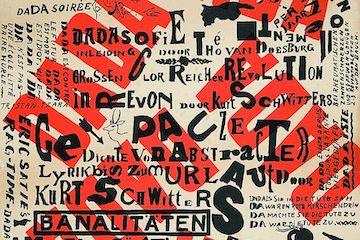
Dadaism. An avant-garde artistic and literary movement that emerged during World War I in Zurich, Switzerland, around 1916. It was a reaction to the perceived senselessness of war and sought to reject traditional artistic values through absurdity, irrationality, and anti-establishment sentiments.
Origins and Philosophy
- Founded by artists and poets, including Hugo Ball, Tristan Tzara, and Hans Arp.
- Rejected logic, reason, and aesthetic conventions in favor of spontaneity and chaos.
- Heavily influenced by political and social upheaval, critiquing nationalism and capitalism.
Artistic Expression
Dada artists utilized unconventional techniques to challenge established norms:
- Collage and Photomontage: Used by artists like Hannah Höch and Raoul Hausmann to create fragmented, provocative images.
- Readymades: Everyday objects repurposed as art, as seen in Marcel Duchamp’s Fountain (1917).
- Performance and Poetry: Often nonsensical, surreal, and spontaneous, exemplified by Kurt Schwitters’ Ursonate.
Influence and Legacy
Though the movement declined by the mid-1920s, its impact was profound:
- Led to the development of Surrealism, championed by former Dadaists like André Breton.
- Influenced contemporary art movements such as Conceptual Art and Punk Aesthetics.
- Continues to inspire anti-establishment and experimental artistic expressions today.
Major Avant-garde Movements
Several key avant-garde movements have shaped artistic and cultural history:
- Dadaism – A reaction against World War I, emphasizing absurdity and anti-art aesthetics.
- Surrealism – Rooted in the unconscious mind, surrealist works often defy logic and reality.
- Futurism – Focused on technology, speed, and modernity, rejecting past traditions.
- Abstract Expressionism – A post-World War II movement characterized by spontaneous and emotive art.
- Conceptual Art – Prioritizing ideas over traditional artistic techniques and forms.